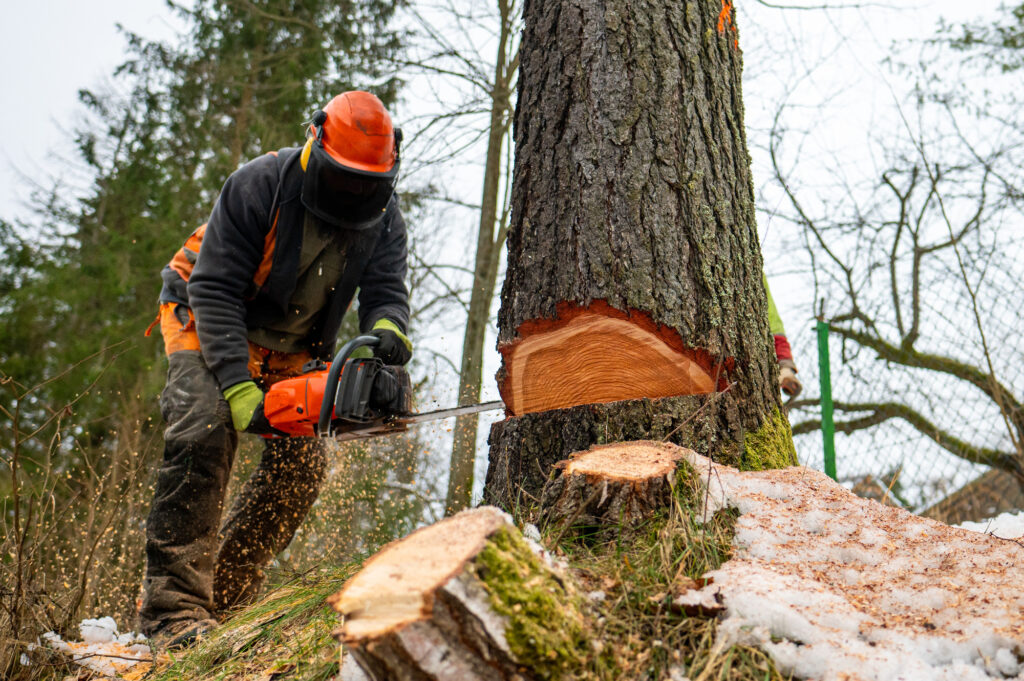Having to cut down a treasured tree could tug at your heartstrings. After all, it can be disheartening to remove one that’s giving ample shade or harboring endearing memories.
Still, safety and practical needs occasionally make tree removal the right move. One reason is to avoid accidents or fatalities caused by strong winds carrying tree branches.
This article shares some clear signs when it’s time to bid farewell to that reliable tree out back, from telling health flags to the safest removal methods to keeping your property thriving. Stay informed so you act in everyone’s best interest, both yours and the tree’s.
Assessing the health of your tree
Determining if your tree is healthy or potentially hazardous requires a thorough inspection. It helps to consult tree service professionals to assess health issues accurately and remove the tree safely.
- Signs of decline
Wilting leaves, dead branches, leaning trunks, cracks in bark, increased fungus growths, and missing foliage signify distressed trees. Also, watch out for sawdust-like frass or sap weeping from holes. These are red flags of lurking insects chewing trees up from the inside out.
- Structural issues
When storms hit or years pile on, branch angles could warp, and old wounds worsen. These stability saboteurs make trees leaning near buildings risky over time as they further threaten foundations and rooflines. Before chainsawing, tree removal specialists thoroughly assess fall zone factors, weighing if routing or pruning keeps safety rooted versus clearing the yard.
- Disease
Tree diseases target species differently based on region, too. An example is the verticillium wilt that’s plaguing North American maples through dropping leaves and odd sapwood. But only certified arborists accurately eyeball such tree- and area-specific ailments. Their wisdom knows subtle symptoms most people won’t notice.
- Professional consultation
Visual inspections can flag early disease signs. But trees can nosedive internally before outward symptoms manifest. An arborist goes deeper by using resistographs revealing decay inside. Their expertise diagnoses and gauges actual damage and informs possible treatments or removal necessities down the road. So, probe tree health beyond surface levels through their seasoned eyes.
Planning for the future
Consider how retaining or removing a tree impacts current and future landscaping plans. After all, your choice can significantly affect your home’s value. An arborist can help you with this, offering advice on pruning and directional growth management to shape it appropriately.
However, some fast-growing trees, like willows, can quickly grow wild. So, removing them opens yard space for better-suited plantings matching your landscape vision. With incompatible trees gone, future safety risks and maintenance headaches are reduced, too.
Moreover, always evaluate whether your property sustains a tree’s long-term water, nutrient, and climate needs. If the tree’s destined to be stressed no matter what, explore kinder replacement options versus dragging out the struggle with stopgap measures. Relocating it humanely or choosing vegetation thriving for years in your conditions keeps the focus practical yet green.

Environmental considerations
As nature’s steward, weigh ecological factors before removing healthy trees, which are invaluable for habitats and fighting climate change through carbon absorption. If the ax must fall, explore alternatives first, like pruning or transplanting. To minimize impacts, consult local arborist groups who do tree relocation assistance or recommend ethical removal methods. They stay dedicated to responsibly balancing biodiverse landscapes and human needs.
Responsibly removing severely distressed trees also supports forest health. However, in many regions, it’s illegal to cut down protected tree species without permits, so verify regulations in your area. Take care not to harm nearby healthy trees and avoid killing tree roots, as doing so may cause other issues like the tree’s instability or death.
You must also use ethical tree disposal methods when necessary to remove trees. In cases of catastrophic disease outbreaks, professionals may use various methods to contain contamination, such as on-site burning. Tree service specialists can guide you through permitting and evidence documentation processes for such cases.
Financial implications
As with many landscaping services, professional tree removals incur a cost. Compare tree removal estimates from qualified companies against potential expenses incurred by retaining hazardous trees. The resulting property damage, like cracked walls, disrupted pipes, and roof repairs, often exceeds removal costs.
While insurance may cover storm damage repairs, pre-existing disease or decay issues aren’t covered. By proactively removing hazardous trees, you can eliminate potential threats that could result in expensive out-of-pocket maintenance in the future. Reputable professionals can guide responsible ways to recycle the removed wood, too, like milling lumber or mulching diseased bits.
Aesthetic impact
Sometimes, beautifying your landscape involves bidding farewell to an overgrown tree. Those limiting sunlight or views often top removal lists, opening design possibilities. Without shade encroachment, gardens potentially yield more, too. Thoughtfully chosen replacements by landscape architects also sustain natural beauty while meeting needs.
Removing trees clears room for reimagining your entire landscape design. Bouncing ideas off a landscape architect or horticulturist sparks fresh creativity for replacements, too. Describe your vision, property, and lifestyle needs, and let them suggest aesthetic picks like suitable trees with sizes, growth rates, and forms that enhance the whole space. Their guidance blends the practical and beautiful.
Taking action
Mark underground utilities and secure necessary permits before removing any trees. Plus, engage qualified professionals. Check their credentials, insurance coverage, and experience. Reliable arborists or tree services will have proper licensing, reference-worthy track records, and safety steps already baked in.
Are you trying to decide what’s best for your landscape and your beloved tree? Consult arborists and architects first. They can holistically weigh tree health factors, your goals, environmental impacts, budgets, and aesthetics. With their seasoned insights, you’ll confidently map solutions catering harmoniously to both land and needs.
Conclusion
Assessing every angle—from safety, plans, and ecology to money and beauty matters—brings responsible tree removal decisions. Consulting certified a tree removal specialist also lends balanced guidance on inevitable transitions. Lean on these experts’ wisdom to thoughtfully remove trees when necessary, transforming outdoor areas to meet practical needs while preserving natural beauty.






